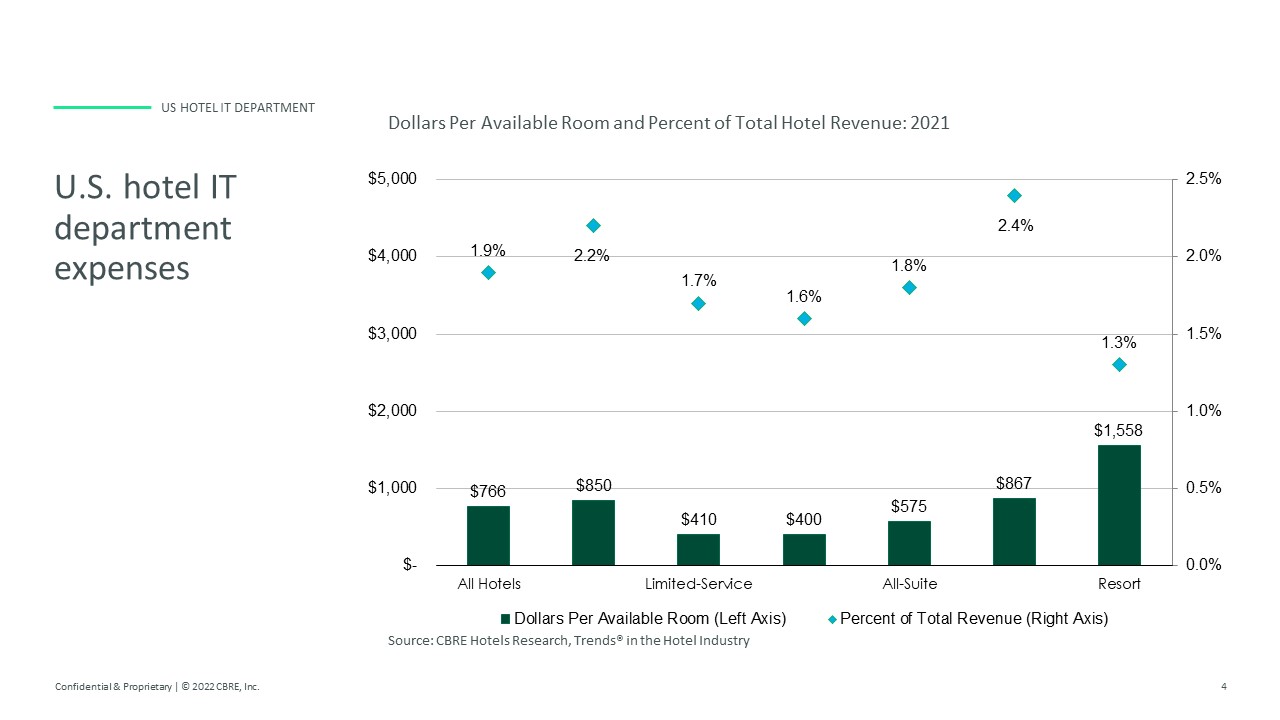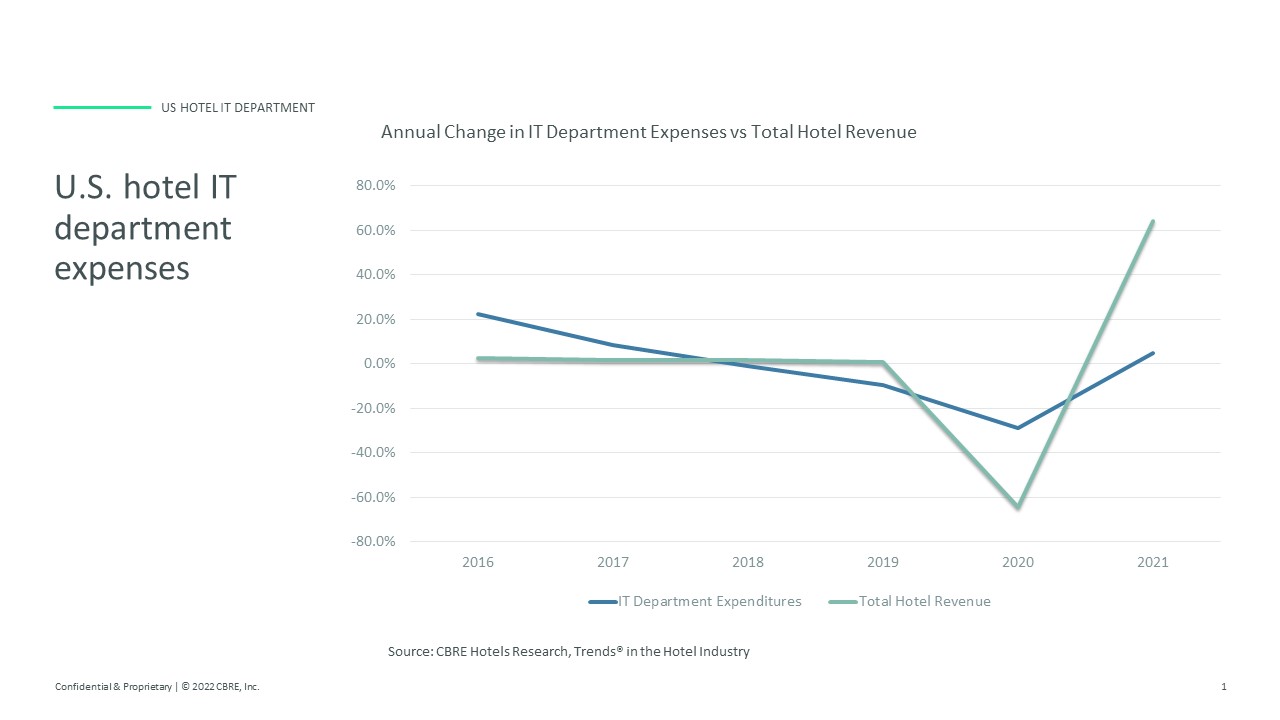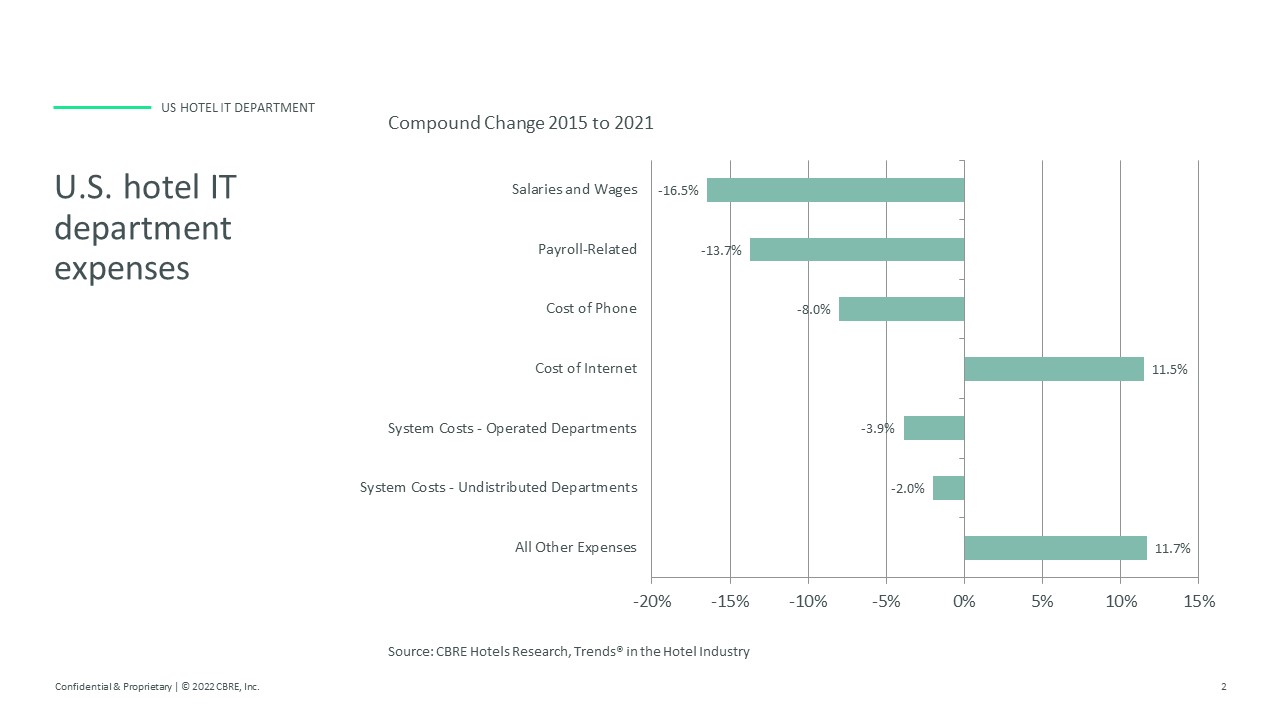By Robert Mandelbaum and Adam Barry
Just as technology has become more ubiquitous throughout our lives, it is now impacting guest service and hotel operations throughout all departments in a hotel. To provide more exposure to the growing costs associated with hotel information and technology systems, the 11th edition of the Uniform System of Account for the Lodging Industry added a discrete undistributed department to capture these expenses. Prior to the 11th edition the costs for phone and internet service, payroll for telephone operators and computer technicians, and charges related to information systems were allocated to multiple departments within the operating statement.

Labor Costs and Related Expenses
The salaries, wages and employee benefits for telephone operators, directors of information systems, and systems analysts and programmers.
Cost of Services
The cost of phone, internet, cell, and fax services for administrative purposes, or when offered to guests on a complimentary basis. When hotel guests are charged for these services, the revenue and cost of sale are recorded in other operated departments.
System Expenses
Software licenses, maintenance, service, storage, and software fees associated with IT systems used in both the operated and undistributed departments.
Other Expenses
All other IT department expenses such as operating supplies, training, system storage and optimization, uniforms, and travel.
Not included in the IT department are capital expenditures for major IT software and hardware installations.
One way to control costs is to perform a diagnostic IT inventory. The diagnosis consists of an evaluation of your hotel’s current service plans and invoices. Understanding what’s currently in place, owners and operators can identify ways to enhance service plans, negotiate new contracts and get the most out of their technology spend.
A thorough IT inventory can:
- Identify billing errors and recovery capital
- Provide a Mark-to-Market on information and telecommunication services with the goal of contract re-negotiation and more flexible terms
- Show alternative options to consider if they exist
IT Within Hotels
The use of technology within hotels originated in the back-of-the-house departments. Accounting and reservation systems were the first to be used within a hotel. Going forward, there is a trend toward more guest-facing technology. Smart phone apps and other technology designed to assist with check-in, room service, concierge services, guest requests and complaints, entertainment, and payment are examples of technologies that are currently under development to enhance the guest experience. The payback for these investments is easier to measure now that hotels can track and benchmark their technology-related operating expenditures within the IT department.




